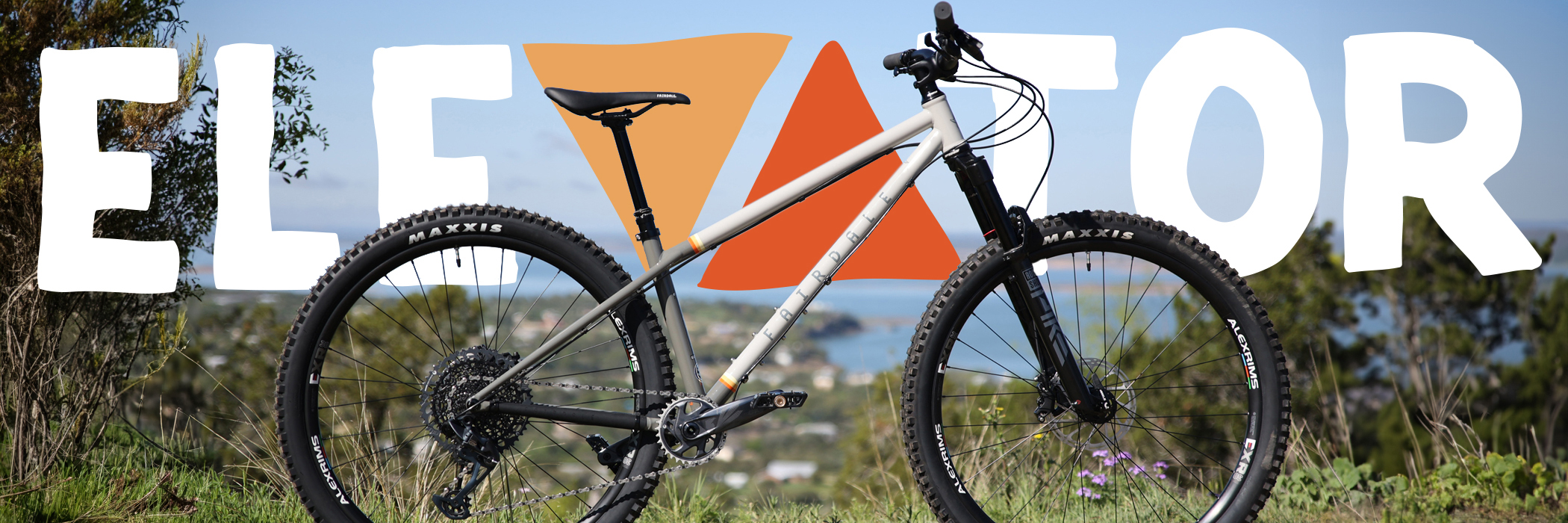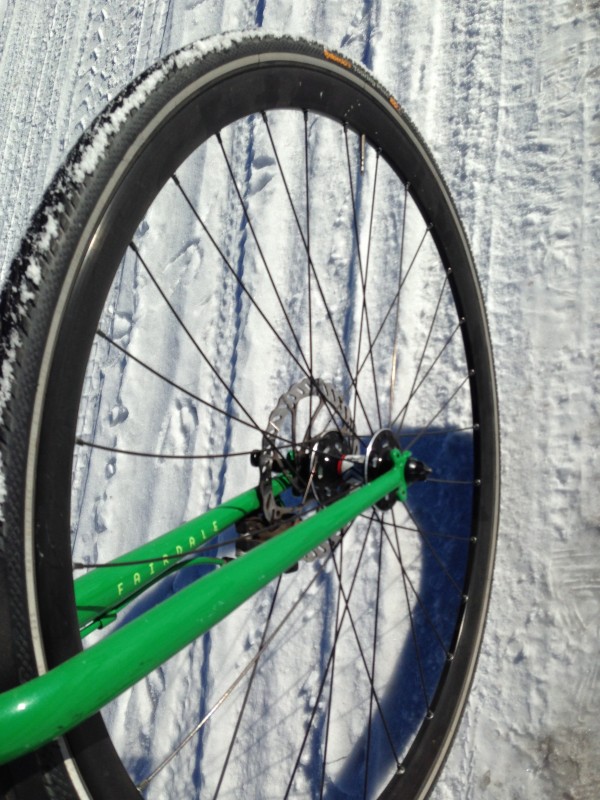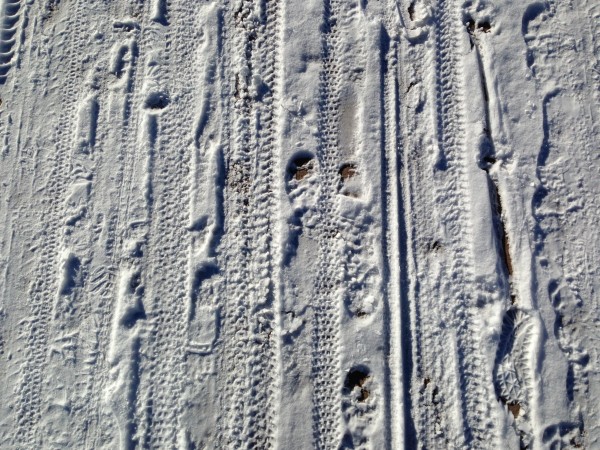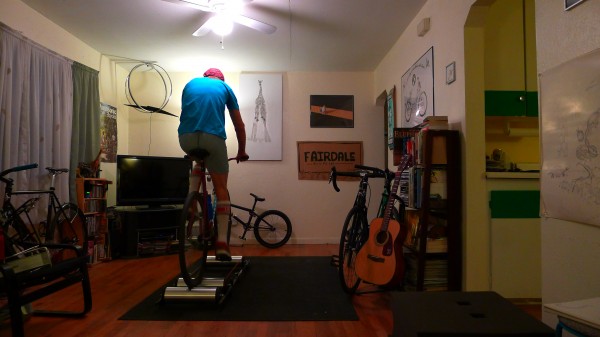Ice is not prejudICE! Fairdale cold weather riding tips
 When the cold arrives and the snow starts to fall a lot of people put their bikes away. That’s a shame because riding in the winter can be surprisingly enjoyable. The quiet blanket of snow over everything and the empty bike paths are a treat to ride. There’s only a few things you need to know before you can be out enjoying your bike in the “worst” kind of weather. Expert winter commuter Leif Valin shares some winter riding tips in the article below….
When the cold arrives and the snow starts to fall a lot of people put their bikes away. That’s a shame because riding in the winter can be surprisingly enjoyable. The quiet blanket of snow over everything and the empty bike paths are a treat to ride. There’s only a few things you need to know before you can be out enjoying your bike in the “worst” kind of weather. Expert winter commuter Leif Valin shares some winter riding tips in the article below….
Riding year round can bring up some challenges. In Florida you might need to don a scarf in addition to your long sleeve t-shirt. In Minnesota you may need much more gear when winter rolls around. If you want to keep your wheels turning no matter what mother nature throws at you (and you’re not a Polar Bear Club member or a penguin) you`ll need to have the proper clothing and riding techniques. These will keep you warm and intact through even the coldest weather.
For some milder winters this might be as simple as putting on some thermal speedo`s, maybe a pair of pants and long sleeve shirt. The same cold weather gear used for walking and hiking (I.E. big jacket and snowpants) will feel bulky and not breathe well enough for riding more than a few miles. A little pedaling can warm you up in a hurry so you need gear that breathes and wicks moisture away from your skin. Dry and warm are good, hot and sweaty leads to cold and frozen.
I learned this first hand. When I first started winter riding I’d wear a nice Carhartt jacket my friend gave me with a couple layers under it. That was great for walking, snowboarding, Christmas Caroling and doing sick graffiti but after riding 3 miles I would be sweating like Newman interrogating Jerry over a mail insurance fraud case.
 Then my friend Mia gave me a Gore jacket with Windstopper™ features and some other magic in the fabric. I thought, “surely this thin jacket cannot hold back the wind, snow and ice gods yet still keep me warm and dry.” To my surprise it could! With just my t-shirt, and one good breathable base layer (wool or tech fabric) under my gore jacket I was kept dry and warm. I sang praises to Mia and the technology jacket!
Then my friend Mia gave me a Gore jacket with Windstopper™ features and some other magic in the fabric. I thought, “surely this thin jacket cannot hold back the wind, snow and ice gods yet still keep me warm and dry.” To my surprise it could! With just my t-shirt, and one good breathable base layer (wool or tech fabric) under my gore jacket I was kept dry and warm. I sang praises to Mia and the technology jacket!
For riding in really cold winter climates you might need to cloak yourself not only in a jacket but also in some other technological miracles of modern cycling. Breathable yet windproof and water resistant gloves, socks, and pants will let you battle even the worst conditions. Gore bike wear, Pearl Izumi, Craft, or Endura are some reputable brands that make good outerwear in a variety of guises and functions.
Layering is the best technique I`ve discovered for staying comfortable. This allows you to add or shed layers based on changing temperatures of the day or night. It’s important to have base layers with moisture wicking ability. I like a zip up base layer with a thin snug fitting hood that can fit under a helmet and sleeve thumb holes. Keeps the body heat in and can be opened up for heat dissipation if you start getting too warm.
I bring a small packable hooded rain jacket with me in the rainy months.
Balaclava and goggles for extreme cold dude!
Riding Techniques
Winter’s slippery conditions can either slow you down or knock you down. Ice hidden under snow can be a real danger. Your Strava times may suffer but you can still enjoy a ride! Remember Polar Bears are not impressed with your Strava times. Riding on ice is like discussing politics with strangers at a dinner party; You never know what could happen but be prepared for the worst!
-Slow and steady riding with no abrupt turning or braking are key to staying upright when riding on ice and snow. Learning this tricky balance comes with experience and unfortunately falling sometimes. Look ahead and if you need to brake before a patch of ice stay loose and ready to put the pontoons (feet) down.
-Some of the most dangerous spots are hidden. Ice lurking in a shaded area or under snow when the rest of the road/ path is dry can catch you off guard in a hurry. I`ve crashed when cruising at speed by an unexpected ice patch, “oooohhh ooooooww *&$##!!!#$%^&*%^!!” This taught me to look out more to avoid going down with the ship. Live and learn!
-Day slush turns to night ice with the tracks of tires and feet leaving molds of themselves. This makes ruts that narrower tires tend to track in whether you want them to or not. It can be quite hair raising when you are suddenly turning a direction you didn’t expect too with your tires following some ice rut.
-A bigger more aggressive tread tire with lower psi makes the snow riding more bearable and safer.
-Some good lights and a quality comfortable helmet are even more important in dark winter months. Be seen, see ahead, and be ready for a crash!
Riding inside is an option as well if you have rollers, a trainer or giant house with a built velodrome or skatepark.
You could try tying a bunch of Helium filled balloons to your bike. Maybe you`d never crash?
May you be bolder and never grow colder.
-Leif










